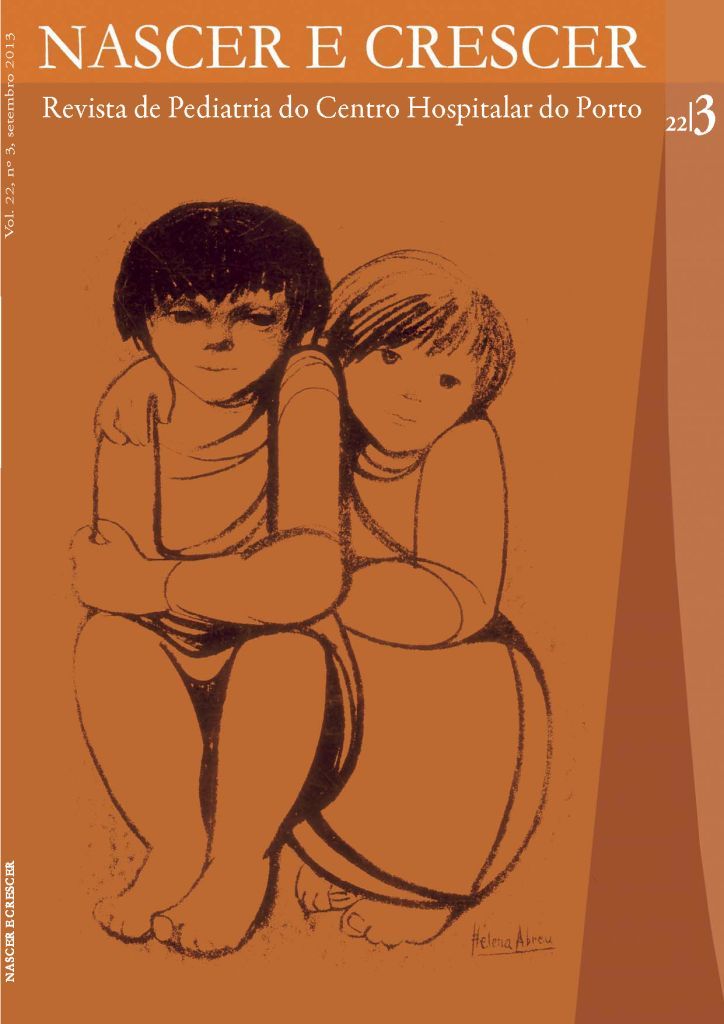SEVERELY BURNED PATIENT IN A PEDIATRIC INTENSIVE CARE UNIT – 20 YEARS EXPERIENCE
DOI:
https://doi.org/10.25753/BirthGrowthMJ.v22.i3.10645Keywords:
Burned patient, child, Paediatric Intensive Care UnitAbstract
Background: Initial approach of severely burned patient until hemodynamic and hydroelectrolytic stabilization is crucial to minimize morbidity and mortality.
Material and methods: Retrospective descriptive and analytic study of all burned patients admitted in a Paediatric Intensive Care Unit during a 20 year period (between April/1991 and December/2010). Nosodemographic data, causal agent, severity and extension of burn, procedures, treatment, complications and outcome were analyzed.
Results: There were 137 admissions for burn, corresponding to 123 patients and to 1.8% of all admissions in the PICU. The median age was 3.6 years, and 62.4% were male. Higher incidence of cases was found in August (13.0%). Burning agents were: boiling liquid (38.1%), fire (38.1%) and electricity (23.9%). The median total body surface burned area was 30% (0.5 - 92.0%), 59.0% corresponding to third degree burns. Mechanical ventilation was needed in 45.5% and central venous catheter in 64.2% of patients. Complications included: sepsis (29.2%), respiratory failure (21.1%), cardiovascular failure (16.5%) and multiorgan failure (18.8%). Patients recovered in 88.6% of cases and there were 10 deaths (8.1%), nine of them in the first 10 years of the study, and nine due to infection. However, the paediatric risk of mortality score (PRISM, the therapeutic intervention scoring system (TISS) and the risk probability of death (RPM) were higher in the second decade.
Conclusion: In the last years of the study, despite the higher number of admissions and greater severity, there was a decrease in the number of deaths, which may be related to the improvement of care in these patients.
Downloads
References
D’Souza AL, Nelson NG, McKenzie LB. Pediatric burn injuries
treated in US emergency departments between 1990 and
Pediatrics 2009; 124:1424 -30.
da Silva PN, Amarante J, Costa -Ferreira A, Silva A, Reis J.
Burn patients in Portugal: analysis of 14,797 cases during
-1999. Burns 2003; 29:265 -9.
Cusick JM, Grant EJ, Kucan JO. Children’s sleepwear: relaxation
of the Consumer Product Safety Commission’s ß ammability
standards. J Burn Care Rehabil 1997; 18:469 -76.
Vale MC, Estrada J, Vasconcelos C. Grande Queimado em
Cuidados Intensivos Pediátricos. Acta Pediatr Port 2000;
:427 -30.
Soares MR, Valente P, Vale MC, Estrada J, Ventura L, Barata
D, et al. PerÞ l do grande queimado em cuidados intensivos
pediátricos - Experiência de doze anos. Nascer e Crescer
; 16:70 -3.
Serour F, Gorenstein A, Boaz M. Characteristics of thermal
burns in children admitted to an Israeli pediatric surgical
ward. Isr Med Assoc J 2008; 10:282 -6.
Rosen D, Avishai -Eliner S, Borenstein A, Leviav A, Tabachnik
E. Life -threatening laryngeal burns in toddlers following hot
liquid aspiration. Acta Paediatr 2000; 89:1018 -20.
Miller SF, Bessey PQ, Schurr MJ, Browning SM, Jeng JC,
Caruso DM, et al. National Burn Repository 2005: a ten -year
review. J Burn Care Res 2006; 27:411 -36.
Istre GR, McCoy M, Carlin DK, McClain J. Residential Þ re
related deaths and injuries among children: Þ replay, smoke
alarms, and prevention. Inj Prev 2002; 8:128 -32.
Gastmeier P, Weigty O, Sohr D, Rüden H. Comparison of
hospital -acquired infection rates in paediatric burn patients. J
Hosp Infect 2002; 52:161 -65.
Sheridan RL, Sepsis in pediatric burn patients, Pediatr Crit
Care Med 2005; 6:S112 -19.
Ng DK, Cherk SW, Yu WL, Lau MY, Ho JC, Chau CK. Review
of children with severe trauma or thermal injury requiring
intensive care in a Hong Kong hospital: retrospective study.
Hong Kong Med J 2002; 8:82 -6.
Jeschke MG, Mlcak RP, Finnerty CC, Norbury WB, Przkora R,
Kulp GA, et al. Gender Differences in Pediatric Burn Patients
Does It Make a Difference? Ann Surg 2008; 248:126 -36.
O’Mara MS, Chapyak D, Greenhalgh DG, Palmieri TL. End
of life in the pediatric burn patient. J Burn Care Res 2006;
:803 -8.
Thombs BD. Patient and Injury Characteristics, Mortality
Risk, and Length of Stay Related to Child Abuse by Burning
Evidence from a National Sample of 15,802 Pediatric Admissions.
Ann Surg 2008: 247:519 -23.
Downloads
Published
How to Cite
Issue
Section
License
Copyright and access
This journal offers immediate free access to its content, following the principle that providing free scientific knowledge to the public provides greater global democratization of knowledge.
The works are licensed under a Creative Commons Attribution Non-commercial 4.0 International license.
Nascer e Crescer – Birth and Growth Medical Journal do not charge any submission or processing fee to the articles submitted.


